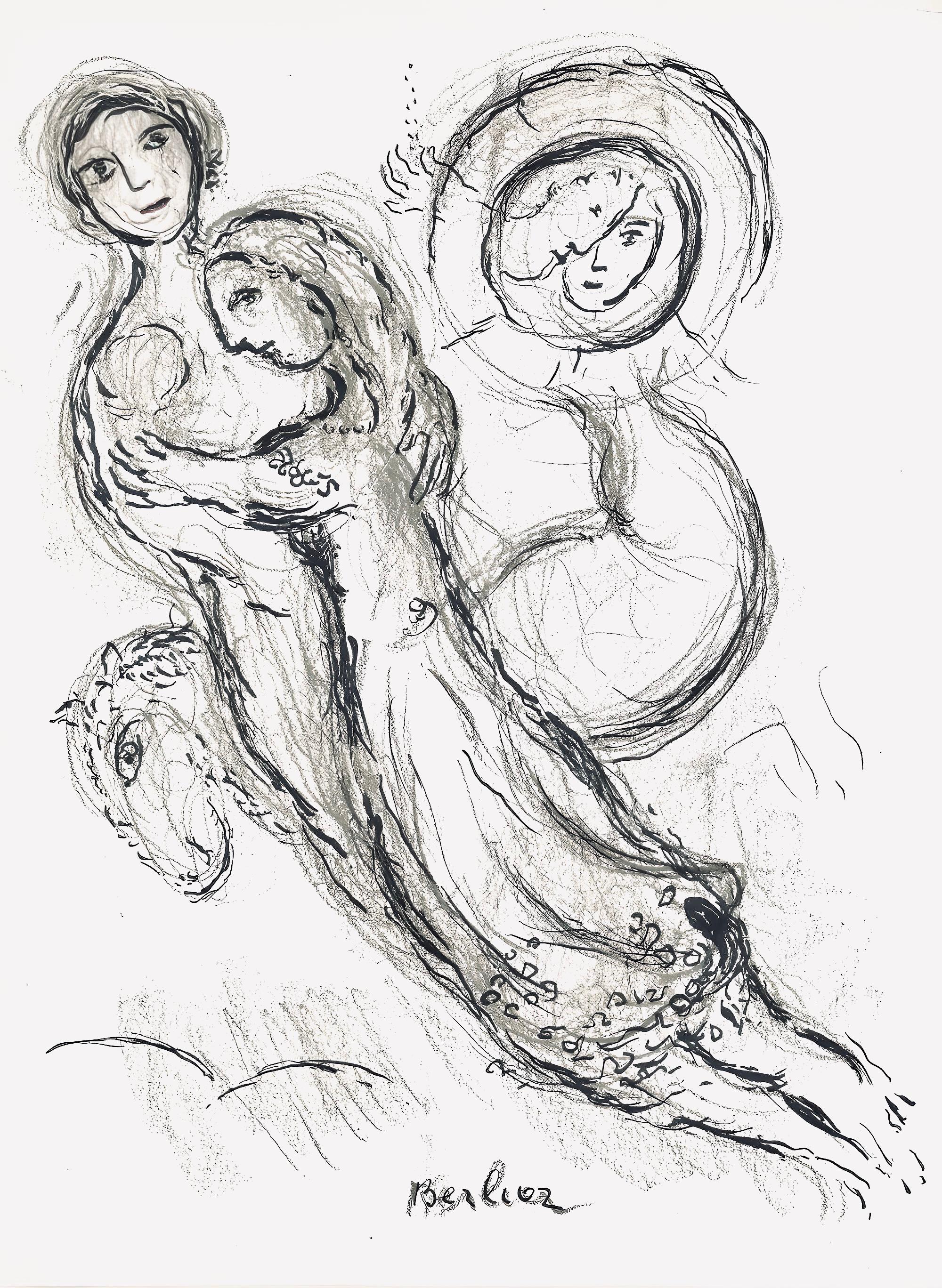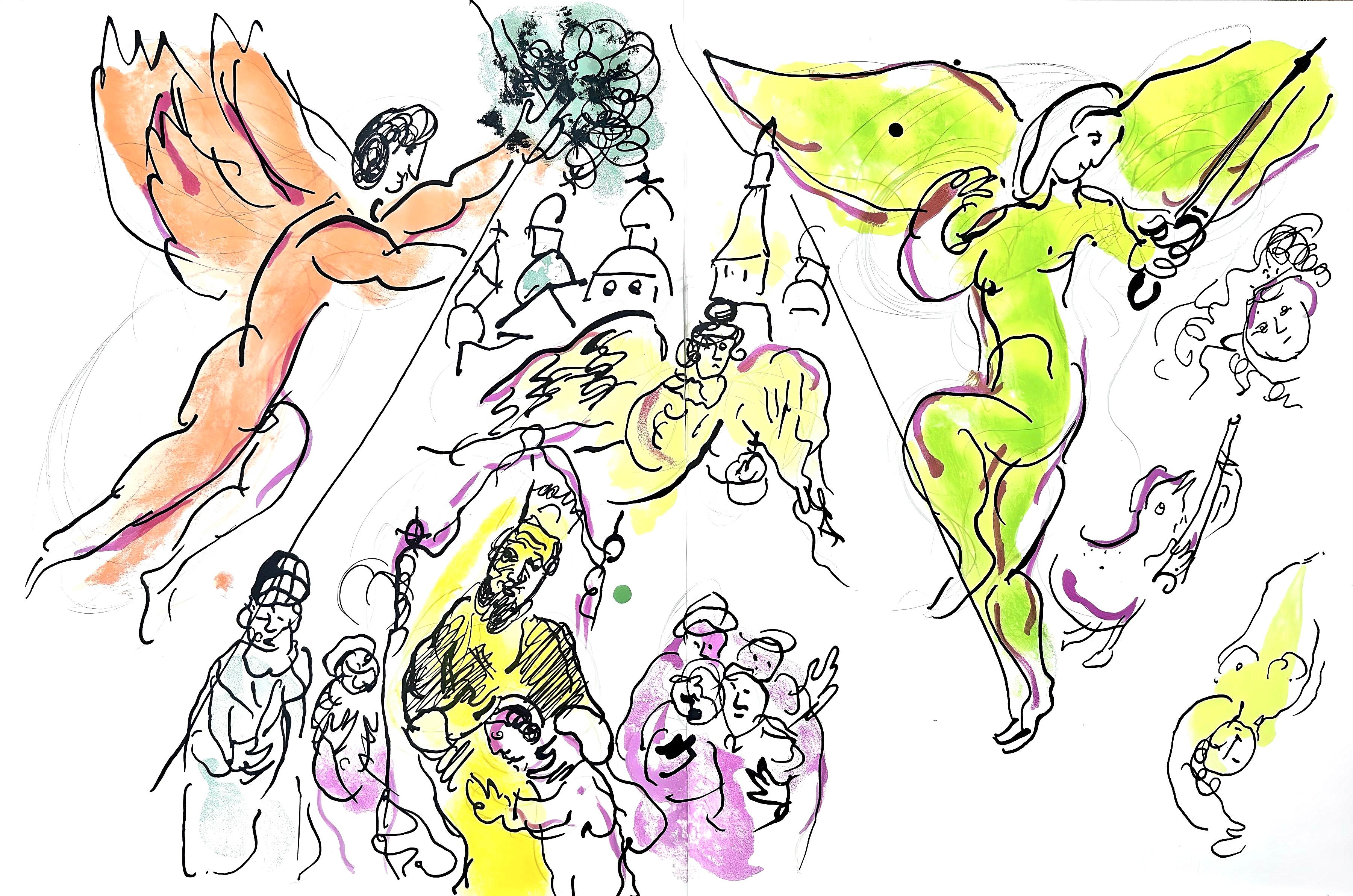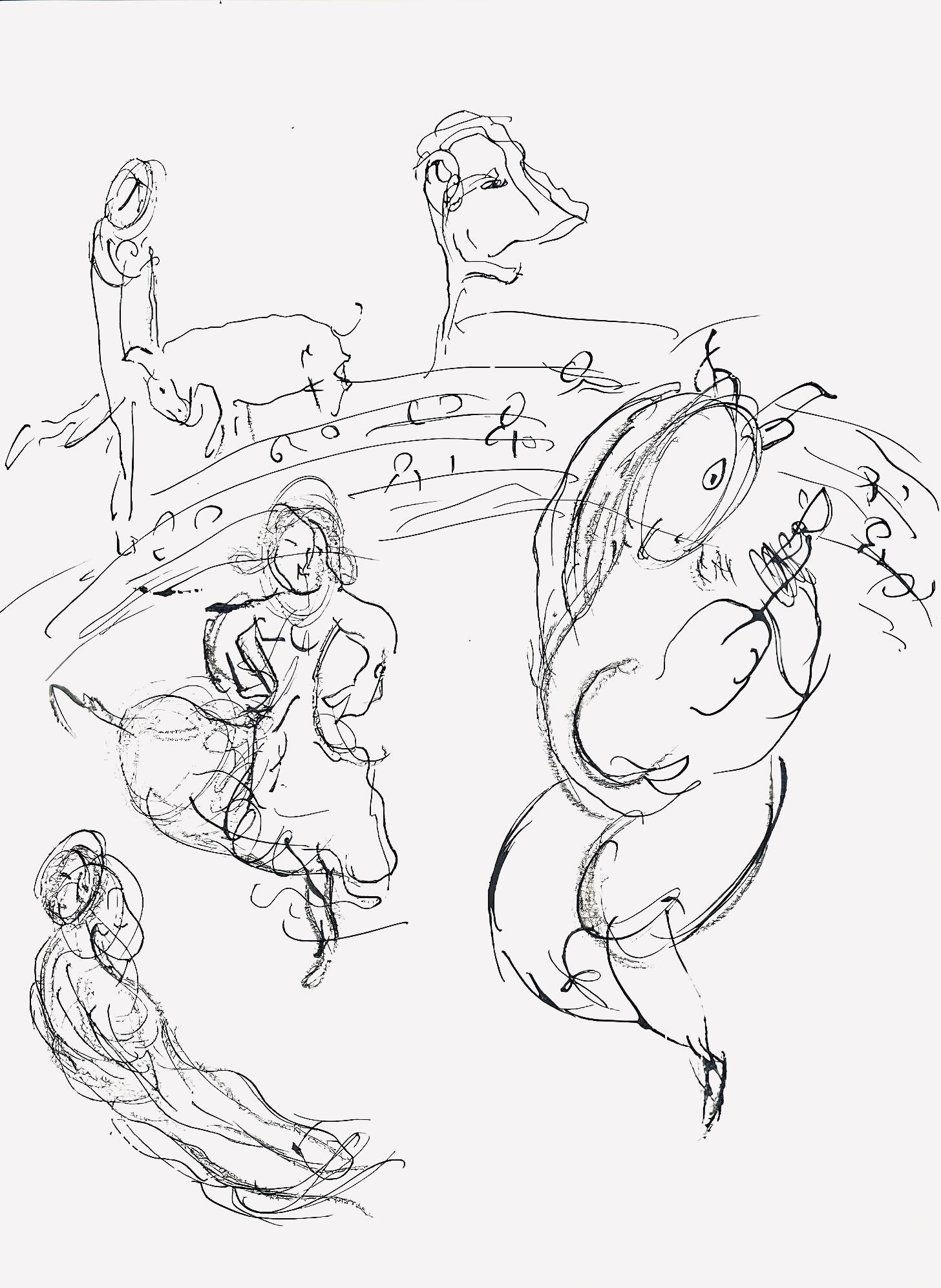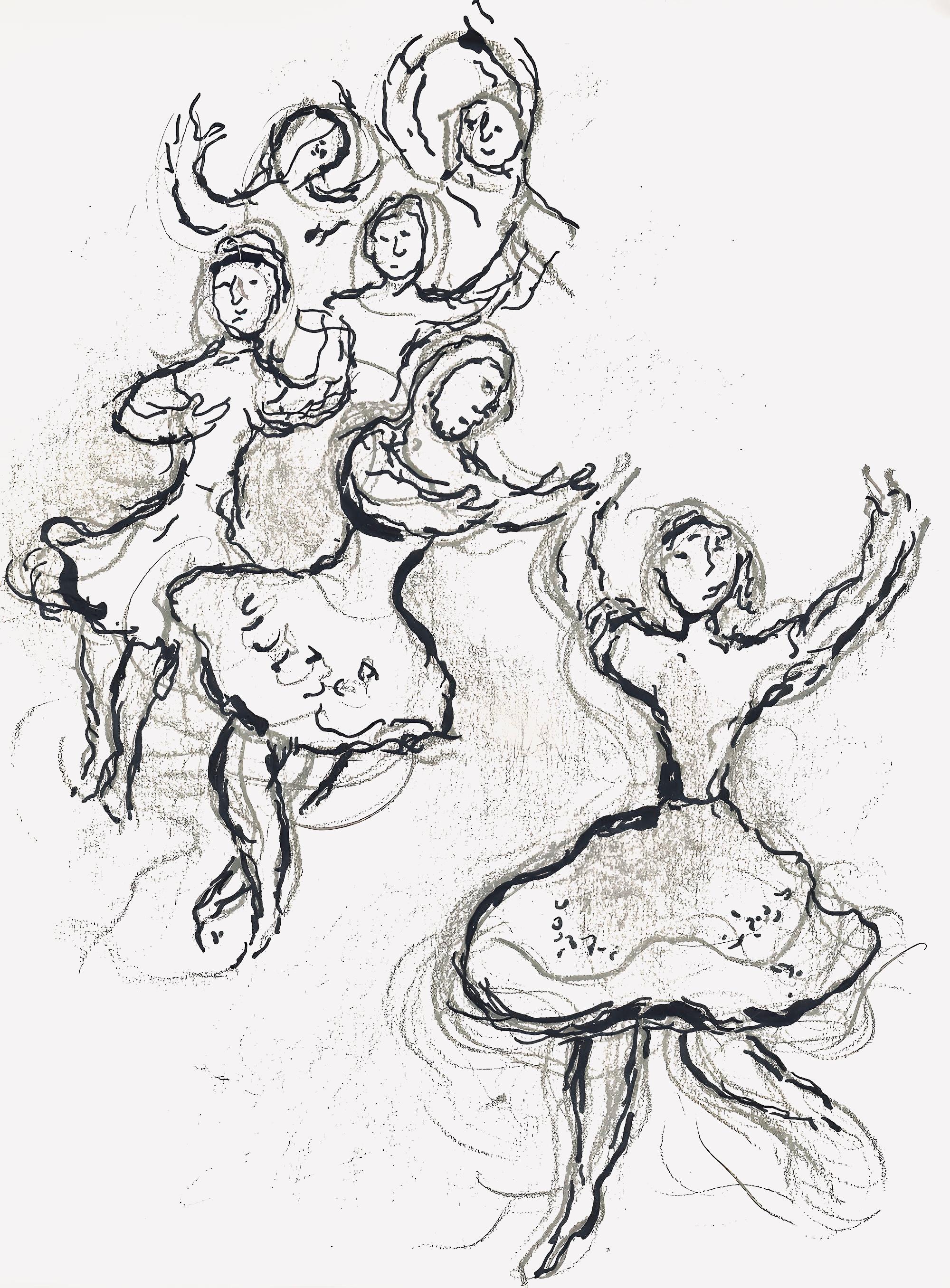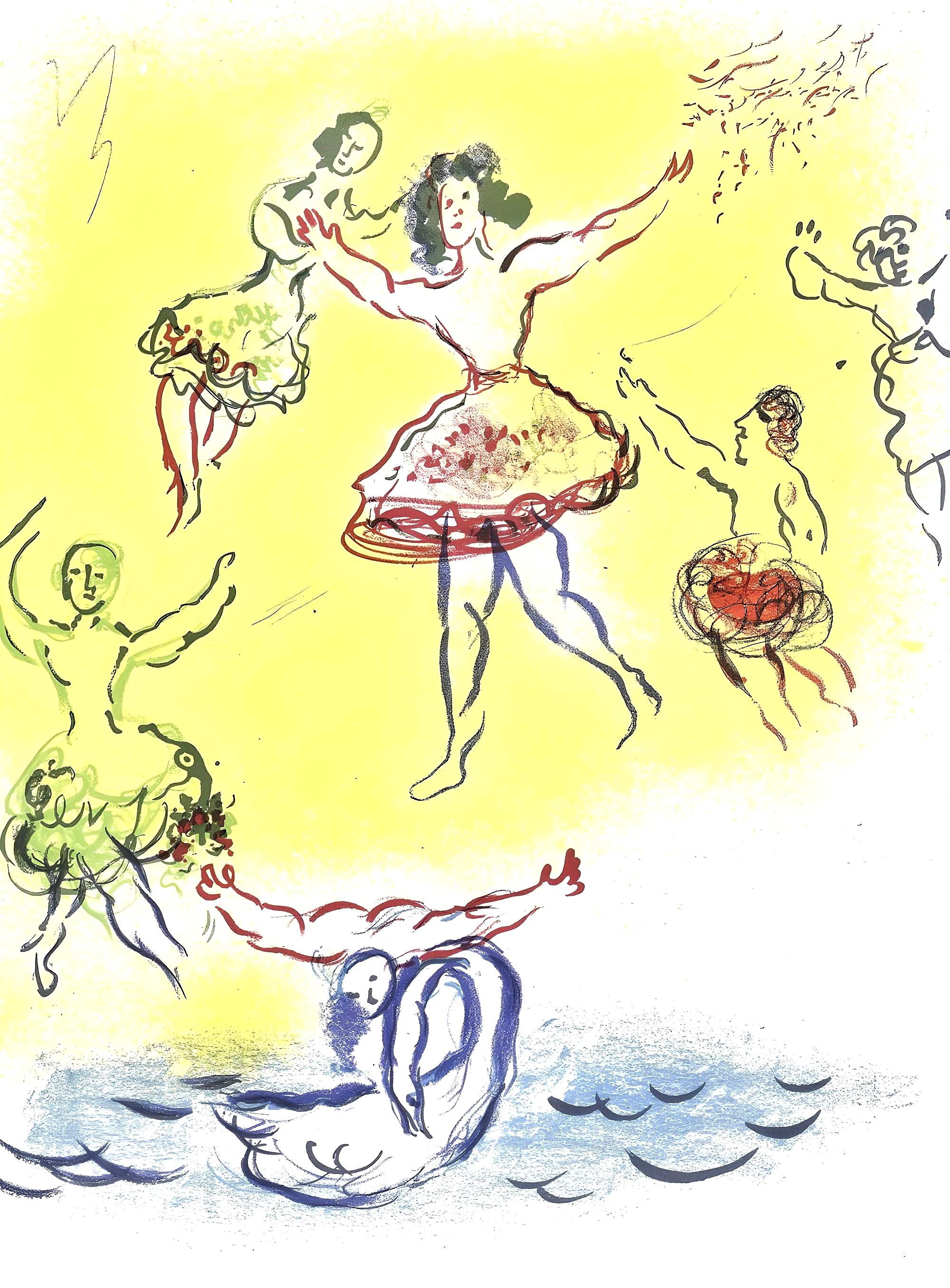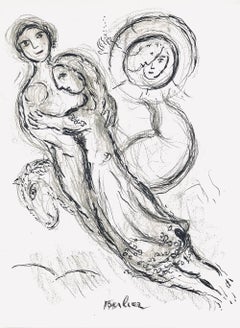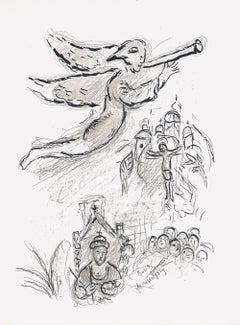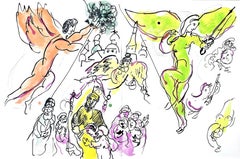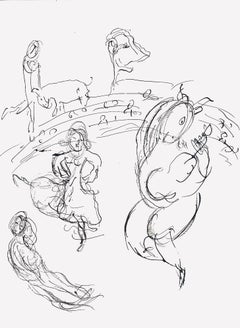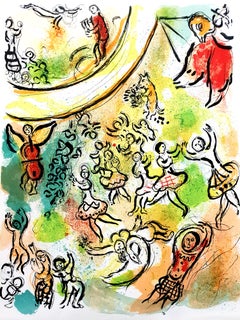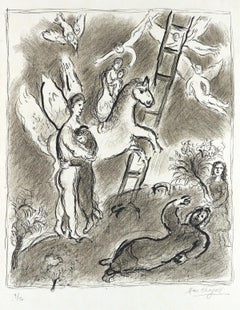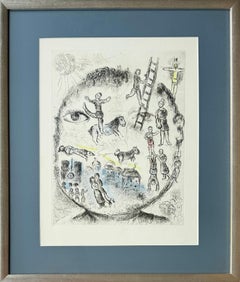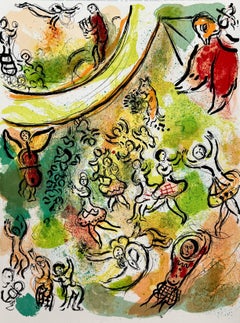Items Similar to Chagall, Composition (Cramer 61; Mourlot 434), Le plafond de l'Opéra (after)
Want more images or videos?
Request additional images or videos from the seller
1 of 8
Chagall, Composition (Cramer 61; Mourlot 434), Le plafond de l'Opéra (after)1965
1965
$716
$89520% Off
£545.31
£681.6420% Off
€628.55
€785.6920% Off
CA$1,001.68
CA$1,252.1020% Off
A$1,125.82
A$1,407.2820% Off
CHF 586.30
CHF 732.8720% Off
MX$13,692.77
MX$17,115.9620% Off
NOK 7,502.40
NOK 9,37820% Off
SEK 7,114.49
SEK 8,893.1120% Off
DKK 4,691.09
DKK 5,863.8720% Off
Shipping
Retrieving quote...The 1stDibs Promise:
Authenticity Guarantee,
Money-Back Guarantee,
24-Hour Cancellation
About the Item
Lithograph on vélin paper. Paper Size: 13 x 9.5 inches. Inscription: Unsigned and unnumbered, as issued. Catalogue raisonné references: Cain, Julien, and Fernand Mourlot. Chagall Lithographe III, 1962-1968. André Sauret, Éditeur, 1969, illustration 434. Cramer, Patrick, and Meret Meyer. Marc Chagall: Catalogue Raisonné Des Livres Illustrés. P. Cramer ed., 1995, illustration 61. Notes: From the album, Le plafond de l'Opéra de Paris par Marc Chagall, 1965. Published by André Sauret, Éditeur, Monte Carlo; rendered by Charles Sorlier, Paris; printed by Mourlot Frères, Paris, October 6, 1965 in an edition of V̅. Excerpted from the album, This work could not have been made without the valuable collaboration of Madame Marc Chagall to whom we extend our warmest thanks. This work, made by André Sauret was completed to print on October 6, 1965 on the presses of l'imprimerie du Lion in Paris. Jacques Lassaigne's texts were composed by hand in Romain du Roi in the workshops of l'imprimerie nationale. The VI color lithographies and all the black and white drawings were set on stone by Charles Sorlier, based on Marc Chagall’s original models. The original lithography and color lithographs were drawn on the presses of Mourlot Frères. The binding is by Maurice Busenhart in Lausanne. The VI color photographs of the entire ceiling are from Jean Dubout the eight black photographs of the technical realization of the ceiling are by Izis.
MARC CHAGALL (1897-1985) was a Russian-French artist. An early modernist, he was associated with the École de Paris as well as several major artistic styles and created works in a wide range of artistic formats, including painting, drawings, book illustrations, stained glass, stage sets, ceramics, tapestries and fine art prints. Chagall was born into a Jewish family near Vitebsk, today in Belarus, but at that time in the Pale of Settlement of the Russian Empire. Before World War I, he travelled between Saint Petersburg, Paris, and Berlin. During that period, he created his own mixture and style of modern art, based on his ideas of Eastern European and Jewish folklore. He spent the wartime years in his native Belarus, becoming one of the country's most distinguished artists and a member of the modernist avant-garde, founding the Vitebsk Arts College. He later worked in and near Moscow in difficult conditions during hard times in Russia following the Bolshevik Revolution, before leaving again for Paris in 1923. During World War II, he escaped occupied France to the United States, where he lived in New York City for seven years before returning to France in 1948. Art critic Robert Hughes referred to Chagall as "the quintessential Jewish artist of the twentieth century". According to art historian Michael J. Lewis, Chagall was considered to be "the last survivor of the first generation of European modernists". For decades, he "had also been respected as the world's pre-eminent Jewish artist". Using the medium of stained glass, he produced windows for the cathedrals of Reims and Metz as well as the Fraumünster in Zürich, windows for the UN and the Art Institute of Chicago and the Jerusalem Windows in Israel. He also did large-scale paintings, including part of the ceiling of the Paris Opéra. He experienced modernism's "golden age" in Paris, where "he synthesized the art forms of Cubism, Symbolism, and Fauvism, and the influence of Fauvism gave rise to Surrealism". Yet throughout these phases of his style "he remained most emphatically a Jewish artist, whose work was one long dreamy reverie of life in his native village of Vitebsk." "When Matisse dies", Pablo Picasso remarked in the 1950s, "Chagall will be the only painter left who understands what colour really is.”
- Creation Year:1965
- Dimensions:Height: 13 in (33.02 cm)Width: 9.5 in (24.13 cm)
- Medium:
- Movement & Style:
- After:Marc Chagall (1887 - 1985, French)
- Period:
- Condition:
- Gallery Location:Auburn Hills, MI
- Reference Number:1stDibs: LU1465216408602
About the Seller
4.9
Platinum Seller
Premium sellers with a 4.7+ rating and 24-hour response times
Established in 1978
1stDibs seller since 2021
1,142 sales on 1stDibs
Typical response time: <1 hour
- ShippingRetrieving quote...Shipping from: Auburn Hills, MI
- Return Policy
Authenticity Guarantee
In the unlikely event there’s an issue with an item’s authenticity, contact us within 1 year for a full refund. DetailsMoney-Back Guarantee
If your item is not as described, is damaged in transit, or does not arrive, contact us within 7 days for a full refund. Details24-Hour Cancellation
You have a 24-hour grace period in which to reconsider your purchase, with no questions asked.Vetted Professional Sellers
Our world-class sellers must adhere to strict standards for service and quality, maintaining the integrity of our listings.Price-Match Guarantee
If you find that a seller listed the same item for a lower price elsewhere, we’ll match it.Trusted Global Delivery
Our best-in-class carrier network provides specialized shipping options worldwide, including custom delivery.More From This Seller
View AllChagall, Composition (Cramer 61; Mourlot 434), Le plafond de l'Opéra (after)
By Marc Chagall
Located in Auburn Hills, MI
Lithograph on vélin paper. Paper Size: 13 x 9.5 inches. Inscription: Unsigned and unnumbered, as issued. Catalogue raisonné references: Cain, Julien, and Fernand Mourlot. Chagall Lit...
Category
1960s Expressionist Figurative Prints
Materials
Lithograph
$716 Sale Price
20% Off
Free Shipping
Chagall, Composition (Cramer 61; Mourlot 434), Le plafond de l'Opéra (after)
By Marc Chagall
Located in Auburn Hills, MI
Lithograph on vélin paper. Paper Size: 13 x 9.5 inches. Inscription: Unsigned and unnumbered, as issued. Catalogue raisonné references: Cain, Julien, and Fernand Mourlot. Chagall Lit...
Category
1960s Expressionist Figurative Prints
Materials
Lithograph
$716 Sale Price
20% Off
Free Shipping
Chagall, Composition (Cramer 61; Mourlot 434), Le plafond de l'Opéra (after)
By Marc Chagall
Located in Auburn Hills, MI
Lithograph on vélin paper. Paper Size: 13 x 19 inches, with centerfold, as issued. Inscription: Unsigned and unnumbered, as issued. Catalogue raisonné references: Cain, Julien, and F...
Category
1960s Expressionist Figurative Prints
Materials
Lithograph
$716 Sale Price
20% Off
Free Shipping
Chagall, Composition (Cramer 61; Mourlot 434), Le plafond de l'Opéra (after)
By Marc Chagall
Located in Auburn Hills, MI
Lithograph on vélin paper. Paper Size: 13 x 9.5 inches. Inscription: Unsigned and unnumbered, as issued. Catalogue raisonné references: Cain, Julien, and Fernand Mourlot. Chagall Lit...
Category
1960s Expressionist Figurative Prints
Materials
Lithograph
$716 Sale Price
20% Off
Free Shipping
Chagall, Composition (Cramer 61; Mourlot 434), Le plafond de l'Opéra (after)
By Marc Chagall
Located in Auburn Hills, MI
Lithograph on vélin paper. Paper Size: 13 x 9.5 inches. Inscription: Unsigned and unnumbered, as issued. Catalogue raisonné references: Cain, Julien, and Fernand Mourlot. Chagall Lit...
Category
1960s Expressionist Figurative Prints
Materials
Lithograph
$716 Sale Price
20% Off
Free Shipping
Chagall, Composition (Cramer 61; Mourlot 434), Le plafond de l'Opéra (after)
By Marc Chagall
Located in Auburn Hills, MI
Lithograph on vélin paper. Paper Size: 13 x 9.5 inches. Inscription: Unsigned and unnumbered, as issued. Catalogue raisonné references: Cain, Julien, and Fernand Mourlot. Chagall Lit...
Category
1960s Expressionist Figurative Prints
Materials
Lithograph
$716 Sale Price
20% Off
Free Shipping
You May Also Like
Frontispiece for "Le Plafond de l'Opéra de Paris"
By Marc Chagall
Located in Collonge Bellerive, Geneve, CH
Marc Chagall
Original Lithograph
Frontispiece for the book "Le Plafond de l'Opéra de Paris (The Ceiling of the Paris Opera)" by Jacques Lassaigne (Paris...
Category
1960s Surrealist Figurative Prints
Materials
Lithograph
Scène Biblique
By Marc Chagall
Located in New York, NY
A very good impression of this lithograph printed in gray and black. Signed and numbered in pencil by Chagall, from an edition of 50.
Category
1970s Expressionist Figurative Prints
Materials
Lithograph
Celui qui dit les choses sans rien dire, Planche V
By Marc Chagall
Located in OPOLE, PL
Marc Chagall (1887-1985) - Celui qui dit les choses sans rien dire, Planche V
Etching and aquatint from 1976.
An unnumbered and unsigned copy in black, outside from signed edition ...
Category
1970s Surrealist More Prints
Materials
Etching, Aquatint
Marc Chagall - Opera
By Marc Chagall
Located in OPOLE, PL
Marc Chagall (1887-1985) - Opera
Lithograph from 1965.
Dimensions of work: 32 x 23.5 cm.
Publisher: André Sauret, Monte Carlo.
The work is in Excellent condition.
Category
1960s Abstract More Prints
Materials
Lithograph
$852 Sale Price
20% Off
XXe Siecle-Hommage a Marc Chagall
By Marc Chagall
Located in Fairlawn, OH
XXe Siecle-Hommage a Marc Chagall
Color lithograph, 1969
Unsigned as issued by XXe Siecle
From: XXe Siecle, Volume, Special Issue Marc Chagall
Published by G. di San Lazzaro for A. M...
Category
1960s French School Figurative Prints
Materials
Lithograph
Marc Chagall - Original Lithograph
By Marc Chagall
Located in Collonge Bellerive, Geneve, CH
Marc Chagall
Original Lithograph
1963
Dimensions: 32 x 24 cm
Reference: Chagall Lithographe 1957-1962. VOLUME II.
Condition : Excellent
Marc Chagall (born in 1887)
Marc Chagall was born in Belarus in 1887 and developed an early interest in art. After studying painting, in 1907 he left Russia for Paris, where he lived in an artist colony on the city’s outskirts. Fusing his own personal, dreamlike imagery with hints of the fauvism and cubism popular in France at the time, Chagall created his most lasting work—including I and the Village (1911)—some of which would be featured in the Salon des Indépendants exhibitions. After returning to Vitebsk for a visit in 1914, the outbreak of WWI trapped Chagall in Russia. He returned to France in 1923 but was forced to flee the country and Nazi persecution during WWII. Finding asylum in the U.S., Chagall became involved in set and costume design before returning to France in 1948. In his later years, he experimented with new art forms and was commissioned to produce numerous large-scale works. Chagall died in St.-Paul-de-Vence in 1985.
The Village
Marc Chagall was born in a small Hassidic community on the outskirts of Vitebsk, Belarus, on July 7, 1887. His father was a fishmonger, and his mother ran a small sundries shop in the village. As a child, Chagall attended the Jewish elementary school, where he studied Hebrew and the Bible, before later attending the Russian public school. He began to learn the fundamentals of drawing during this time, but perhaps more importantly, he absorbed the world around him, storing away the imagery and themes that would feature largely in most of his later work.
At age 19 Chagall enrolled at a private, all-Jewish art school and began his formal education in painting, studying briefly with portrait artist Yehuda Pen. However, he left the school after several months, moving to St. Petersburg in 1907 to study at the Imperial Society for the Protection of Fine Arts. The following year, he enrolled at the Svanseva School, studying with set designer Léon Bakst, whose work had been featured in Sergei Diaghilev's Ballets Russes. This early experience would prove important to Chagall’s later career as well.
Despite this formal instruction, and the widespread popularity of realism in Russia at the time, Chagall was already establishing his own personal style, which featured a more dreamlike unreality and the people, places and imagery that were close to his heart. Some examples from this period are his Window Vitebsk (1908) and My Fianceé with Black Gloves (1909), which pictured Bella Rosenfeld, to whom he had recently become engaged.
The Beehive
Despite his romance with Bella, in 1911 an allowance from Russian parliament member and art patron Maxim Binaver enabled Chagall to move to Paris, France. After settling briefly in the Montparnasse neighborhood, Chagall moved further afield to an artist colony known as La Ruche (“The Beehive”), where he began to work side by side with abstract painters such as Amedeo Modigliani and Fernand Léger as well as the avant-garde poet Guillaume Apollinaire. At their urging, and under the influence of the wildly popular fauvism and cubism, Chagall lightened his palette and pushed his style ever further from reality. I and the Village (1911) and Homage to Apollinaire (1912) are among his early Parisian works, widely considered to be his most successful and representative period.
Though his work stood stylistically apart from his cubist contemporaries, from 1912 to 1914 Chagall exhibited several paintings at the annual Salon des Indépendants exhibition, where works by the likes of Juan Gris, Marcel Duchamp and Robert Delaunay were causing a stir in the Paris art world. Chagall’s popularity began to spread beyond La Ruche, and in May 1914 he traveled to Berlin to help organize his first solo exhibition, at Der Sturm Gallery. Chagall remained in the city until the highly acclaimed show opened that June. He then returned to Vitebsk, unaware of the fateful events to come.
War, Peace and Revolution
In August 1914 the outbreak of World War I precluded Chagall’s plans to return to Paris. The conflict did little to stem the flow of his creative output, however, instead merely giving him direct access to the childhood scenes so essential to his work, as seen in paintings such as Jew in Green (1914) and Over Vitebsk (1914). His paintings from this period also occasionally featured images of the war’s impact on the region, as with Wounded Soldier (1914) and Marching (1915). But despite the hardships of life during wartime, this would also prove to be a joyful period for Chagall. In July 1915 he married Bella, and she gave birth to a daughter, Ida, the following year. Their appearance in works such as Birthday (1915), Bella and Ida by the Window (1917) and several of his “Lovers” paintings give a glimpse of the island of domestic bliss that was Chagall’s amidst the chaos.
To avoid military service and stay with his new family, Chagall took a position as a clerk in the Ministry of War Economy in St. Petersburg. While there he began work on his autobiography and also immersed himself in the local art scene, befriending novelist Boris Pasternak, among others. He also exhibited his work in the city and soon gained considerable recognition. That notoriety would prove important in the aftermath of the 1917 Russian Revolution when he was appointed as the Commissar of Fine Arts in Vitebsk. In his new post, Chagall undertook various projects in the region, including the 1919 founding of the Academy of the Arts. Despite these endeavors, differences among his colleagues eventually disillusioned Chagall. In 1920 he relinquished his position and moved his family to Moscow, the post-revolution capital of Russia.
In Moscow, Chagall was soon commissioned to create sets and costumes for various productions at the Moscow State Yiddish Theater...
Category
1960s Surrealist Figurative Prints
Materials
Lithograph
More Ways To Browse
Lion Tapestry
Maurice Pre
Lion Stained Glass
Louis Vuitton 2020 Limited Edition
Max Papart Carborundum
Nike Sneakers
Nura Ulreich
Owi Posters
Picasso Hibou
Picasso La Danse
Picasso Pigeons Lithograph
Picasso Saltimbanques
Raymond Grandjean
Romare Bearden Jazz Series
Romero Britto On Sale
Salvador Dali Lithograph Don Quixote
Seven Deadly Sins
Sexy Marilyn Monroe
